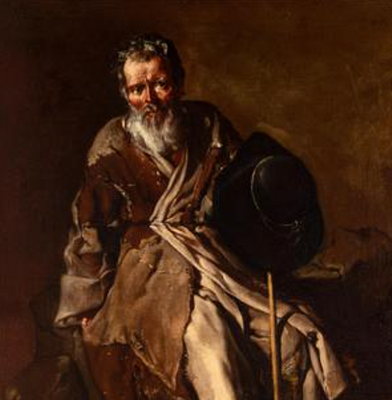ZACARÍAS GONZÁLEZ VELÁZQUEZ (Madrid, 1763 - 1863). "Pair of scenes from Don Quixote". Oil on canvas.
Lot 54
About Seller
Setdart Auction House
Carrer Aragó 346
Barcelona
Spain
Setdart Subastas was born in 2004 and is currently the first online art auction in Spain with solidity, prestige and reliability guaranteed by our more than 60,000 users. Setdart has a young, dynamic and enterprising team ready to successfully manage the purchase and sale of art works through custom...Read more
Estimate:
EUR€8,000 - EUR€10,000
$8,602.15 - $10,752.69
Absentee vs Live bid
Two ways to bid:
- Leave a max absentee bid and the platform will bid on your behalf up to your maximum bid during the live auction.
- Bid live during the auction and your bids will be submitted real-time to the auctioneer.
Bid Increments
| Price | Bid Increment |
|---|---|
| EUR€0 | EUR€10 |
| EUR€200 | EUR€25 |
| EUR€500 | EUR€50 |
| EUR€1,000 | EUR€100 |
| EUR€3,000 | EUR€200 |
| EUR€5,000 | EUR€500 |
| EUR€10,000 | EUR€1,000 |
| EUR€20,000 | EUR€2,000 |
| EUR€50,000 | EUR€5,000 |
About Auction
By Setdart Auction House
Jun 1, 2021
Set Reminder
2021-06-01 09:45:00
2021-06-01 09:45:00
America/New_York
Bidsquare
Bidsquare : OLD MASTERS & SCULPTURE - Day 2
https://www.bidsquare.com/auctions/setdart-auction-house/old-masters-sculpture---day-2-6999
Setdart Auction House sofia@setdart.com
Setdart Auction House sofia@setdart.com
- Lot Description
ZACARÍAS GONZÁLEZ VELÁZQUEZ (Madrid, 1763 - 1863). "Pair of scenes from Don Quixote". Oil on canvas. Size: 38 x 30 cm. Pair of oil on canvas representing two scenes from Don Quixote. One of them has as protagonist a young lady, who is preening herself in a river, while she is spied by two characters, who are hidden behind a stone. The young lady can be identified as Dulcinea. The other painting is starring Sancho and Don Quixote, and can be identified with the title Don Quixote finds the bacía. Both works fall within the framework of the rise of regionalism during the second half of the nineteenth century and the first third of the twentieth century. This period saw the development of an art of romantic heritage, costumbrista and of realistic and meticulous workmanship, which focused on the representation of subjects, themes and characters that reflect a new sense of folklore. In this context, the painters sought to reflect the types and customs of their own land, which made it different and unique, thus vindicating their own roots and, above all, the traditions and ways of dressing and behaving that were threatened by the notable growth of urban areas and the imposition of new fashions brought from outside. Art, fundamentally in its pictorial aspect, thus becomes in a certain way a vehicle of expression capable of making regional peculiarities known to the rest of the nation. Zacarías González Velázquez began his training in the studio of Mariano Salvador Maella, and later completed his studies at the Academy of Fine Arts of San Fernando, where he was awarded prizes in 1778 and 1781. He was a painter of chamber and academic of San Fernando, becoming director of painting and general director of the Royal Academy. As a decorator, his work in the Royal Sites, in the palace of El Pardo and in the Casa del Labrador in Aranjuez stand out. He also participated in the decoration for the funeral of Queen Maria Amalia of Saxony. It is also worth mentioning his work at the Royal Tapestry Factory of Santa Barbara, for which he made cartoons for tapestries with marine themes, based on sketches by Maella, revealing himself as a master of composition and a great colorist. His works are framed in the transition from baroque to neoclassicism, and the earliest ones already show a predominance of drawing over color, a totally neoclassical feature. However, in his final paintings the chromatism is enriched and acquires greater relevance, while showing a precious interest in the treatment of the fabrics and secondary elements, which is even more evident in his portraits.Zacarías González Velázquez is represented in the Prado Museum, in the Romantic Museum of Madrid, the Lázaro Galdiano, the Museum of the Origins (former Museum of San Isidro) and the Diocesan and Cathedral of Lugo, among others.
- Shipping Info
-
In-house shipping available. Please inquire at admin@setdart.com.
-
- Buyer's Premium



 EUR
EUR CAD
CAD AUD
AUD GBP
GBP MXN
MXN HKD
HKD CNY
CNY MYR
MYR SEK
SEK SGD
SGD CHF
CHF THB
THB
















